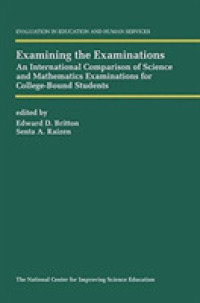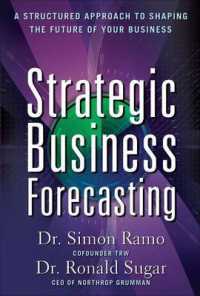Full Description
What happens when learning is approached as a transaction between teachers, students, texts, and methods? Based on classroom action research conducted in a diverse suburban school district, the author shares a framework that encourages teachers to approach their work with a restorative mindset by focusing on four elements of instruction: methods; literature; relationships; and culture, identity, and language. In each chapter, Faughey shares a scenario or problem from her ELA classroom, the action she took to address it, and the outcomes. Examples include a 9th-grade classroom where students developed podcasts to share their thinking about Romeo and Juliet, a 10th-grade classroom where multilingual learners created graphic essays to share their comparative analysis of Things Fall Apart and the film Black Panther, and a 12th-grade classroom where students reimagined Dracula in order to connect personally with the text through restorying. This accessible text provides resources, lesson plans, and examples of student work, as well as suggestions for teacher preparation programs.
Book Features:
Shares the perspective of a classroom teacher who understands the daily interactions teachers have with students, as well as the possibilities and limitations of teaching in today's schools.
Demonstrates a problem-solving thought process with a step-by-step explanation of the author's teaching process.
Includes vivid anecdotes about students, pictures of students working together, and examples of student work.
Situates each scenario within a body of theoretical and research literature, introducing concepts such as cosmopolitan theory, reader response theory, and literary theory.
Offers lesson plans, rubrics, and handouts that teachers can use to inform their own practice.
Provides lists of podcasts, videos, articles, and books that can be used when teaching classic texts such as The Great Gatsby and The Yellow Wallpaper, as well as multicultural texts like Things Fall Apart."
Contents
Contents
Foreword xi
Acknowledgments xiii
1. Introduction 1
Restorative Literacy Practices 2
My Teaching Context and Background 5
A Framework for Restorative Literacy 7
What You Will Find in This Book 11
2. Student-Centered Assessment 13
Embarking on Change 14
Introducing Podcasts 15
Planning for the Unpredictable 16
Reflection 26
Alternative Assessment Ideas 27
Spotlight on Teacher Learning 28
3. Restorative Approaches to Class Participation 29
Student-Led Discussion Leads to Inclusivity 30
Critical Analysis Leads to Sharing Personal Stories 32
Culturally Relevant Literature Leads to Connection 37
Reflection 39
Alternative Class Participation Ideas 40
Spotlight on Teacher Learning 41
4. The Restorative Potential of Visual Texts 43
Integrating the Arts 45
The Power of a Visual Thread 46
Understanding and Rethinking 50
Creating Graphic Essays 52
Involvement and Identification 53
Reflection 56
Ideas for Responding to Student Needs 56
Spotlight on Teacher Learning 57
5. Humanizing the English Curriculum 59
Literary Theory 61
Pairing Texts: Dubliners and There, There 63
Community Connection 67
Reflection 71
Ideas for Making Learning Relevant 72
Spotlight on Teacher Learning 73
6. The Restorative Potential of the Imagination 75
Restorative Routine 76
Building on a Tradition of Restorying 78
A Framework for Restorying 79
Reflection 86
Key Ideas for Your Own Teaching 86
Spotlight on Teacher Learning 87
7. Critical Literacy as Self-Care 89
Pairing Literary and Popular Culture Texts 90
Rethinking Reading 91
Theoretical Frameworks 94
Sharing With Classmates 97
Spotlight on Teacher Learning 98
8. Conclusion 99
Appendix 103
References 109
Index 119
About the Author 127








